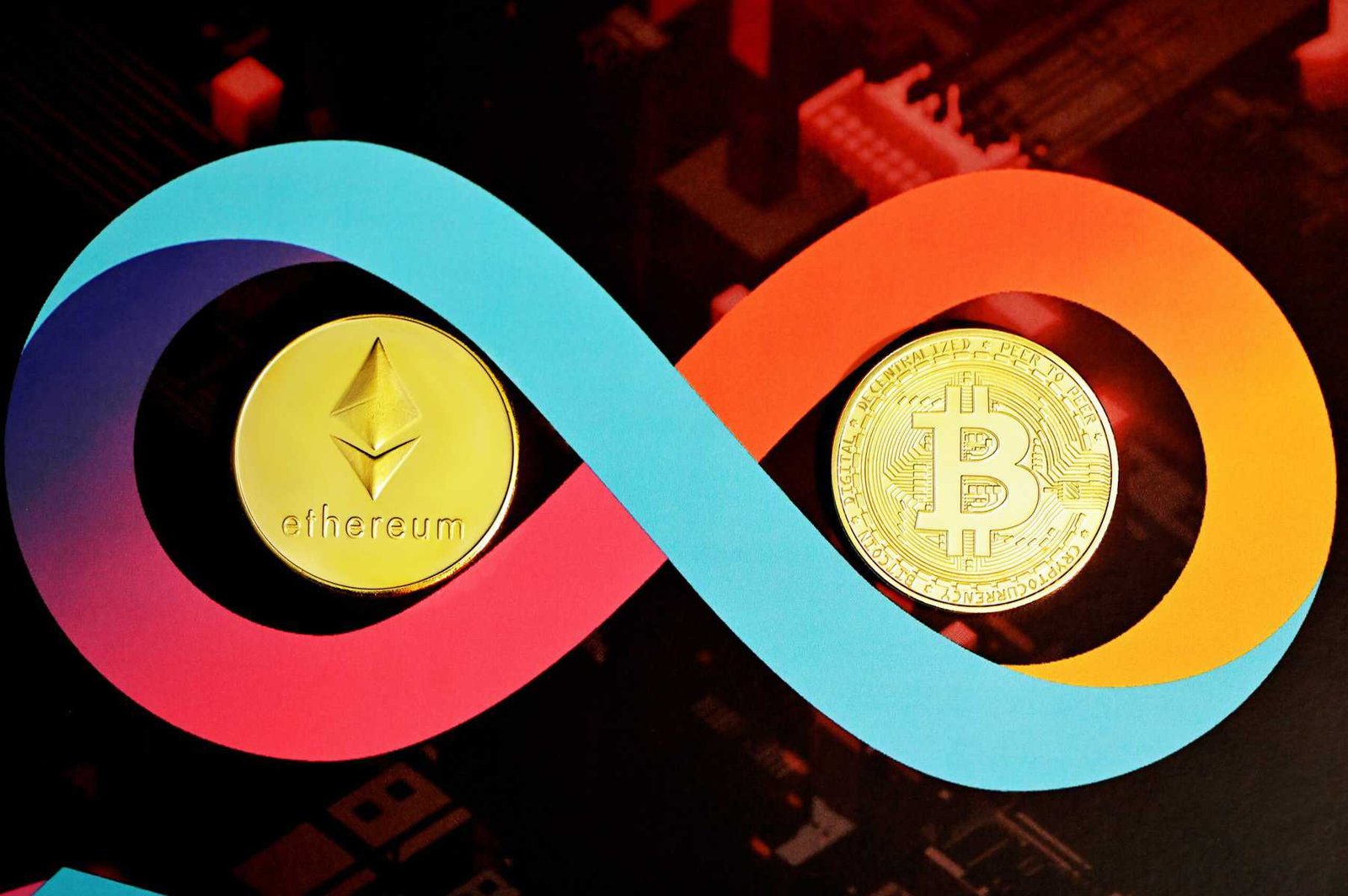Are you ready to explore the fascinating world of Ethereum Classic (ETC)? In this article, we will uncover the key details and features of Ethereum Classic, a decentralized platform that has gained popularity in the world of cryptocurrency. Get ready to embark on a journey into the realm of ETC, where innovation and blockchain technology meld together to revolutionize the way we envision financial systems. Brace yourself for an exhilarating ride as we delve into the intricacies and possibilities of Ethereum Classic.
History of Ethereum Classic
The DAO Hack
The history of Ethereum Classic can be traced back to the infamous DAO hack that occurred in 2016. The DAO, which stands for Decentralized Autonomous Organization, was a pioneering project built on the Ethereum blockchain. It aimed to create a decentralized investment fund where participants could vote on and invest in various projects.
Unfortunately, a vulnerability in the DAO’s smart contract code was exploited, leading to the theft of approximately one-third of its funds, amounting to millions of dollars worth of Ether. The hack showcased the potential risks and vulnerabilities of smart contracts and raised fundamental questions about the nature of blockchain immutability and governance.
The Fork
In response to the DAO hack, the Ethereum community faced a crucial decision – whether to accept the theft as an unfortunate incident or to take action and restore the stolen funds. Ultimately, a majority of the community agreed to a controversial solution: a hard fork that would roll back the blockchain and return the stolen Ether to its rightful owners.
This decision was not universally accepted, as it contradicted the foundational principles of blockchain technology, specifically, immutability and the irreversible nature of transactions. Those who disagreed with the fork argued that it jeopardized the integrity of the Ethereum blockchain and set a dangerous precedent for future interventions.
Creation of Ethereum Classic
As a result of the fork, a portion of the Ethereum community adhered to the original blockchain and rejected the changes made to facilitate the return of the stolen funds. This community then formed Ethereum Classic, a separate and independent blockchain that retained the pre-fork version of Ethereum.
Ethereum Classic sought to preserve the purported immutability and censorship-resistant properties of blockchain technology. With a commitment to upholding the foundational principles that blockchain was built upon, Ethereum Classic became a distinct branch of the Ethereum ecosystem.
Key Features of Ethereum Classic
Smart Contracts
Like Ethereum, Ethereum Classic enables the execution of smart contracts – self-executing agreements with predefined rules and conditions written directly into code. Smart contracts allow for the efficient, transparent, and secure execution of various applications and services on the blockchain.
Decentralization
Decentralization is at the core of Ethereum Classic’s philosophy. By maintaining a distributed network of nodes, Ethereum Classic aims to avoid concentration of power and decision-making authority. This decentralized approach ensures that no single entity can exert control or manipulate the blockchain’s operations.
Immutability
Immutability, or the guarantee that once a transaction is recorded on the blockchain, it cannot be altered or reversed, is a fundamental aspect of Ethereum Classic. By adhering to the principle of immutability, Ethereum Classic aims to create a reliable and transparent ledger where transactions are permanent and resistant to censorship.

Differences Between Ethereum Classic and Ethereum
Philosophical Differences
The primary difference between Ethereum Classic and Ethereum lies in their philosophical approaches to governance and immutability. Ethereum Classic prioritizes the preservation of an unalterable blockchain, while Ethereum favors intervention to protect users and address vulnerabilities.
Community and Development
Over time, Ethereum and Ethereum Classic have developed distinct communities and development ecosystems. Ethereum has garnered broader industry support and adoption, attracting developers and projects looking for scalability and innovation. While Ethereum Classic sees a more niche following, it remains committed to its original philosophy.
Consensus Mechanism
Another noticeable difference between Ethereum Classic and Ethereum is the consensus mechanism they employ. Ethereum Classic uses a Proof of Work (PoW) consensus algorithm, similar to Bitcoin, where miners solve complex cryptographic puzzles to validate transactions. Ethereum, on the other hand, is in the process of transitioning to a Proof of Stake (PoS) consensus mechanism.
Ethereum Classic Mining
Proof of Work
Ethereum Classic mining relies on the Proof of Work consensus algorithm, which provides security and ensures the validity of transactions. Miners compete to solve complex mathematical problems, with the successful miner earning the right to add a new block to the blockchain. This process requires significant computational power and electricity consumption.
Mining Pools
Given the high mining difficulty of Ethereum Classic, many miners join mining pools to combine their computing resources and increase their chances of earning block rewards. Mining pools allow individual miners to contribute their computational power to a collective effort, resulting in more consistent earnings.
Mining Hardware
To mine Ethereum Classic effectively, miners utilize specialized hardware known as Application-Specific Integrated Circuits (ASICs) or Graphics Processing Units (GPUs). These devices are optimized for the specific calculations required by the Proof of Work algorithm, allowing miners to perform calculations at a much faster and more efficient rate.

Ethereum Classic Monetary Policy
Total Coin Supply
Similar to Ethereum, Ethereum Classic has a capped supply of coins. The maximum supply of ETC is set at approximately 210 million coins, with a fixed issuance schedule that gradually releases new coins into circulation.
Inflation Rate
Ethereum Classic has a modest fixed inflation rate, which ensures a controlled and gradual increase in the overall supply of coins. This rate is designed to strike a balance between incentivizing miners to secure the network and maintaining a stable and predictable monetary policy.
Block Time
Ethereum Classic has a targeted block time of around 15 seconds, meaning that a new block is added to the blockchain approximately every 15 seconds. This relatively short block time allows for faster transaction confirmations and improves the overall efficiency of the Ethereum Classic network.
Use Cases of Ethereum Classic
Decentralized Applications
Ethereum Classic provides a platform for the development of decentralized applications (DApps). DApps built on Ethereum Classic can leverage its smart contract functionality to create a wide range of applications, including financial services, gaming, supply chain management, and more.
Tokenization
Tokenization refers to the process of representing real-world assets or digital assets as tokens on a blockchain. Ethereum Classic enables the tokenization of assets, allowing individuals to tokenize and trade various assets, such as real estate, securities, or commodities, in a decentralized and secure manner.
Internet of Things
Ethereum Classic’s robust and secure blockchain infrastructure makes it suitable for integrating with the Internet of Things (IoT). By leveraging Ethereum Classic’s smart contracts, IoT devices can interact and transact autonomously, enabling secure and transparent communication between connected devices.

Ethereum Classic Wallets
Desktop Wallets
Desktop wallets provide a secure storage solution for Ethereum Classic. These wallets are installed on a personal computer and allow users to control their private keys, providing them with complete ownership and control over their ETC holdings. Some popular desktop wallets for Ethereum Classic include Emerald Wallet and ClassicEtherWallet.
Mobile Wallets
Mobile wallets offer a convenient and portable solution for managing Ethereum Classic on smartphones and tablets. These wallets provide similar functionalities to desktop wallets, allowing users to securely store, send, and receive ETC on the go. Trust Wallet and Coinomi are prominent mobile wallets compatible with Ethereum Classic.
Web Wallets
Web wallets, also known as online wallets, allow users to access their Ethereum Classic funds through a web browser. These wallets offer ease of use and accessibility, but users should exercise caution and choose reputable and secure web wallet providers. ClassicMask and MyEtherWallet are popular web wallet options for Ethereum Classic.
Ethereum Classic Development
Ethereum Classic Labs
Ethereum Classic Labs is an entity dedicated to accelerating the development and growth of the Ethereum Classic ecosystem. It provides funding, support, and mentorship to promising projects, developers, and entrepreneurs working on or within the Ethereum Classic community.
Emerald Platform
Emerald Platform is a development framework specifically designed for Ethereum Classic. It offers developers a suite of tools that simplify the creation, testing, and deployment of decentralized applications and smart contracts on the Ethereum Classic network.
Developer Resources
Ethereum Classic provides an extensive range of developer resources to support the growth and adoption of the platform. These resources include documentation, tutorials, libraries, and forums that enable developers to learn, experiment, and collaborate on Ethereum Classic-related projects.
Security and Scalability of Ethereum Classic
51% Attack Vulnerability
One notable concern for blockchain networks is the possibility of a 51% attack, where a single entity or group controls a majority of the network’s mining power. Ethereum Classic has faced such vulnerabilities in the past, highlighting the importance of network security and vigilance in maintaining a decentralized network.
Scaling Solutions
Like other blockchain networks, scalability remains a challenge for Ethereum Classic. However, the Ethereum Classic community continues to explore various scaling solutions, such as layer-two protocols and off-chain solutions, to improve network efficiency and accommodate a larger number of transactions.
Upcoming Upgrades
Ethereum Classic is actively working on several protocol upgrades to enhance security, scalability, and functionality. These upgrades aim to improve system performance, increase throughput, and address existing vulnerabilities. By continually evolving and adapting, Ethereum Classic aims to provide its users with a secure and efficient blockchain network.
Ethereum Classic Price and Market Analysis
Price History
Since its creation, Ethereum Classic has experienced notable price volatility, closely following the trends of the broader cryptocurrency market. While it is difficult to predict the future price movements of any cryptocurrency, factors such as market demand, investor sentiment, and overall market conditions can influence the price of Ethereum Classic.
Market Capitalization
Ethereum Classic’s market capitalization represents the total value of all circulating ETC coins at a given time. As with other cryptocurrencies, Ethereum Classic’s market capitalization fluctuates due to various factors, including market demand, investor activity, and the overall performance of the Ethereum Classic blockchain.
Trading Volume
Trading volume refers to the total amount of ETC coins traded on cryptocurrency exchanges within a specific timeframe. Higher trading volumes indicate increased market activity and liquidity, allowing investors to buy and sell ETC more easily. Monitoring trading volume can provide insights into market trends and investor sentiment toward Ethereum Classic.
In conclusion, Ethereum Classic stands as a distinct blockchain platform that upholds the principles of immutability, decentralization, and security. With a rich history rooted in the DAO hack and subsequent fork, Ethereum Classic has embraced its unique position within the broader blockchain ecosystem. Through its key features, such as smart contracts, decentralization, and immutability, Ethereum Classic offers an infrastructure that supports a wide range of use cases, including decentralized applications, tokenization, and Internet of Things integration. With ongoing developments, collaborations, and upgrades, Ethereum Classic aims to improve its security, scalability, and overall user experience, fostering a thriving ecosystem for developers, entrepreneurs, and investors alike.

